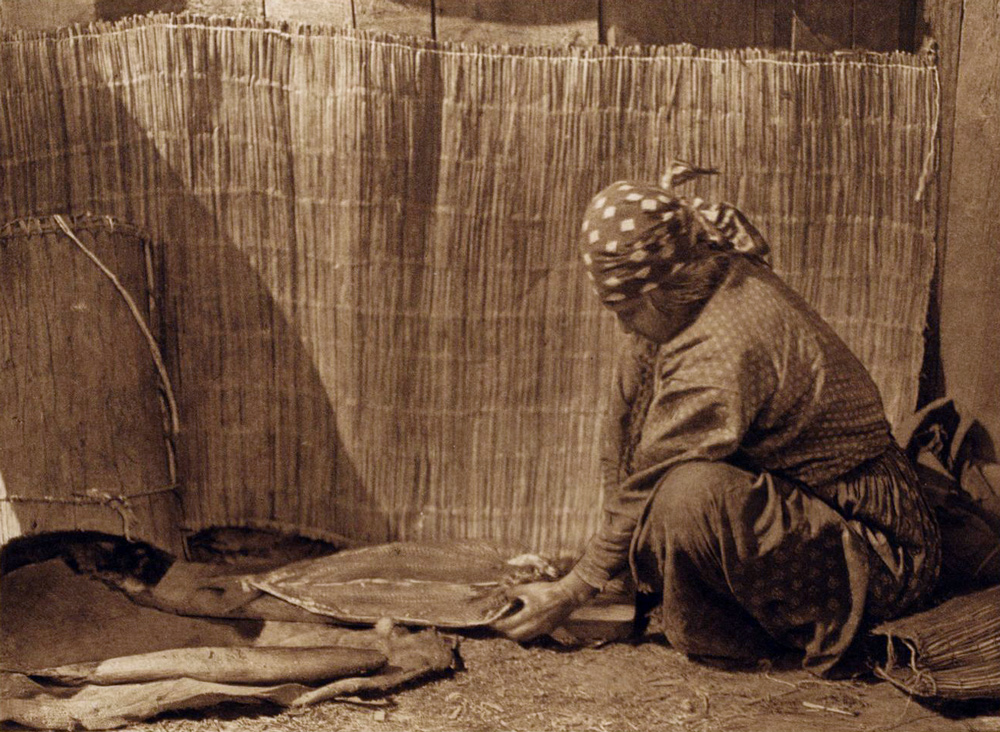Wishram Women Drying Salmon (c. 1910)
Edward S. Curtis (1868–1952)
Photogravure print from The North American Indian, (1907-1930) Vol. 8, Plate facing page 146. Retrieved from the Library of Congress, www.loc.gov/item/94507927.
Photographer Edward Curtis described the processes pictured here:
The staple of barter was . . . (pounded salmon). In the preparation of this article of food the salmon was beheaded and gutted, and with a sharp knife the two halves were separated from the backbone and the skin. The clear strips thus obtained were laid on a platform in the hot sun for a day. The next morning the flesh was soft, and the women squeezed it through their hands into shreds, placing the mass in large dishes or in a pit lined with grass or matting, and mixing with it the large quantities of roe taken from the fish. It was then thoroughly worked over with the hands and spread on a piece of matting. After a thorough drying, for two days, or more if the sun was not hot, it was pounded fine in a maple mortar with a stone pestle [or else, as Clark put it, “between two Stones”], and then rammed tightly into baskets of split cattails lined with fish-skins. Such a package weighed from one hundred to two hundred and fifty pounds, and was the product of about one hundred salmon. Fish prepared in this way kept for months. No salt was used, and to the white man’s palate it was rather insipid.
Another method of preparing salmon was to split the fish, roast it on one side slightly, then squeeze the meat out of the skin into a pit, mix it, dry it for about three days, then place it in a wooden bowl and mix it with fish-oil. It was eaten so, or mixed with berries, or with camas or other roots. Still another method, no longer in use, was to split the fish, thoroughly dry them in the sun, and tie them up in bundles, which were stored in pits lined with grass and matting. Fish so prepared could be kept for several months without spoiling. Fish-heads were dried over a slow fire and used in making soup.[1]Edward S. Curtis, The North American Indian, 20 vols. (Norwood, Massachusetts: Plimpton Press, 1911), 8:94–95.
See also Salmon Spirit and Sustenance.
Notes
| ↑1 | Edward S. Curtis, The North American Indian, 20 vols. (Norwood, Massachusetts: Plimpton Press, 1911), 8:94–95. |
|---|

